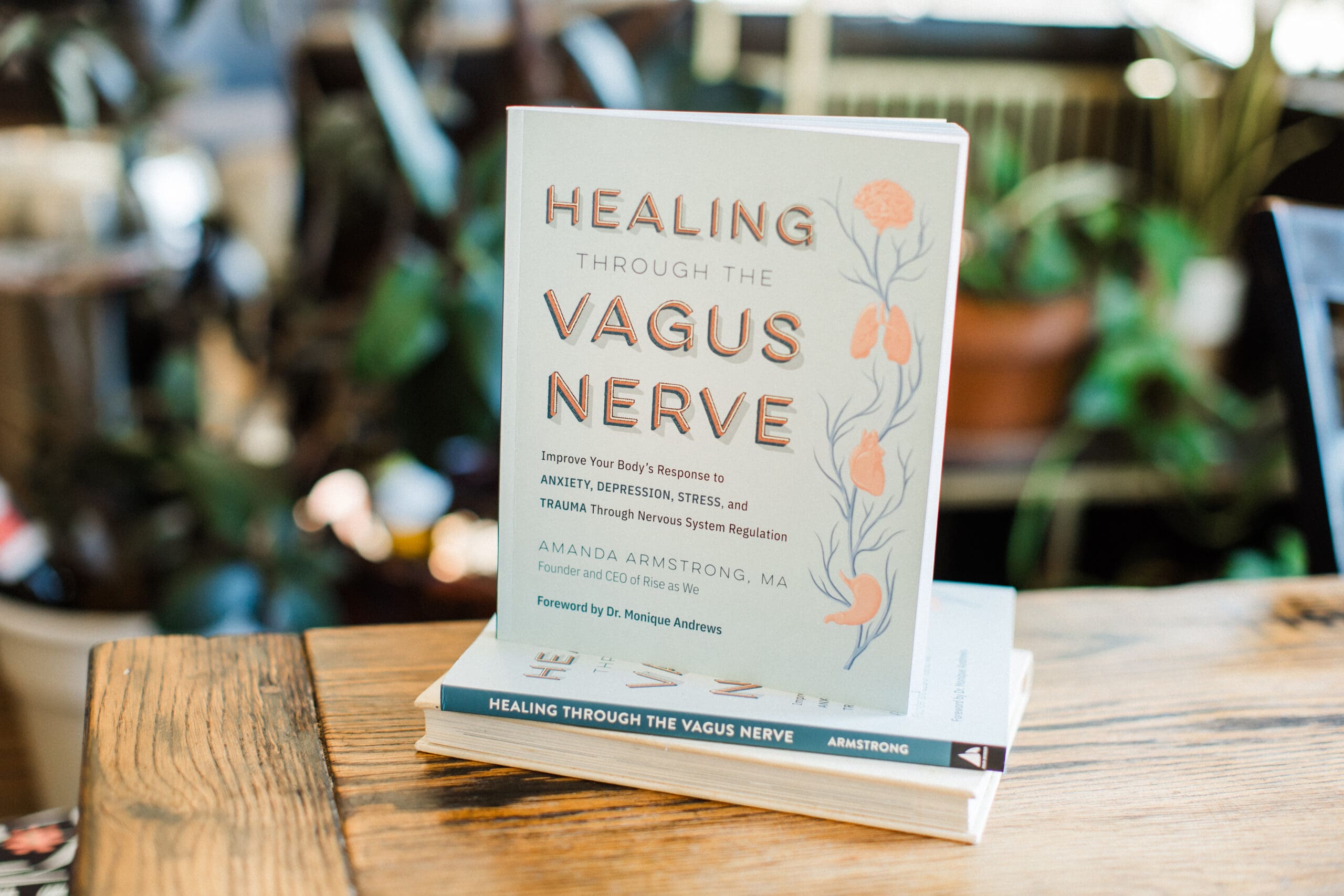How VAGAL TONING Helps You Heal (Essential 8 Series – Part 4)
Episode 62: Spotify | Apple Podcasts | YouTube
View transcript on Buzzsprout
Has it ever felt like you’re playing whack-a-mole with your symptoms? Anxiety, gut issues, exhaustion, trouble focusing, etc… Your vagus nerve could be the key. In this post, part 4 of Amanda’s Essential 8 series, we explore vagal toning as a powerful way to support nervous system regulation and mental health. You’ll learn what vagal tone is, why it matters, and how to improve it with intentional, science-backed practices—many of which are simpler than you might think.
Whether you’re managing chronic stress, struggling with anxiety or depression, or just looking to better understand your body’s signals, this blog will help you build a foundation for healing from the inside out.
📓 Download your Vagal Toning Workbook! – CLICK HERE
What We Cover in This Episode
- What vagal tone is and why it matters for nervous system health
- Signs and symptoms of low vagal tone
- How vagal toning works to improve mental and physical health
- Simple ways to begin strengthening vagal tone today
- A sneak peek into Amanda’s new book: Healing Through the Vagus Nerve
What Is Vagal Tone?
Vagal tone refers to how well your vagus nerve—the main communicator between your brain and body—is functioning. A healthy (high) vagal tone is linked to improved emotional regulation, better digestion, stronger immunity, lower inflammation, and more resilience to stress.
It’s not something you either have or don’t have. Just like muscle tone, vagal tone can be strengthened over time through consistent practice.
How the Vagus Nerve Impacts Your Health
Your vagus nerve runs from your brainstem through your body, touching nearly every major organ. It plays a major role in regulating mood, heart rate, breath, digestion, and more.
Research shows that people with anxiety and depression tend to have lower vagal tone. Common signs include poor sleep, gut issues, chronic pain, heart palpitations, emotional reactivity, and feeling stuck in cycles of stress.
Measuring Vagal Tone: HRV and Symptom Clusters
There’s no direct clinical test for vagal tone, but heart rate variability (HRV) is considered the most objective proxy. A higher HRV typically reflects a healthier, more flexible nervous system.
Wearables like the Oura Ring, Apple Watch, or Whoop band often include HRV tracking. Even if you don’t have a device, you can assess patterns based on your symptoms—like improved digestion, reduced pain, better mood, or less anxiety—as you engage in vagal toning practices.
Tools That Improve Vagal Tone
Improving vagal tone happens in two primary ways:
- Minimize what weakens it: Chronic stress, poor sleep, inflammatory diets, and sedentary living all reduce vagal tone.
- Build daily reps of regulation: Just like muscle training, the vagus nerve responds to regular activation. Amanda calls these “regulation reps.”
Vagal toning tools include:
- Deep, diaphragmatic breathing
- Humming or chanting
- Cold exposure
- Gargling or splashing cold water on your face
- Somatic exercises like those taught in the Release Class
These practices stimulate the vagus nerve and support your shift into a more regulated, parasympathetic state.
A Key Piece of the Puzzle
Vagal toning is powerful—but it’s not about hacks. It’s about building a relationship with your nervous system and slowly increasing your capacity for regulation.
As Amanda shares in her book, Healing Through the Vagus Nerve, healing is less about doing everything perfectly and more about being strategic, consistent, and kind to yourself.Need help making that practical? The Regulated Living Membership and Restore 1:1 Coaching programs offer personalized support, structure, and strategies to help you implement these practices in real life.
Three Tangible Takeaways
- You can train your vagus nerve. Vagal tone isn’t fixed—it improves through regular activation and lifestyle changes.
- HRV and symptoms are your clues. Track what shifts as you build regulation reps into your days.
- Vagal toning works best when it’s part of a lifestyle. Sleep, movement, stress management, and connection all support vagal tone over time.
Looking for more personalized support?
- Book a FREE discovery call for RESTORE, our 1:1 anxiety & depression coaching program (HSA/FSA eligible & includes comprehensive bloodwork)
- Join me inside the Regulated Living Membership, a mental health membership and nervous system healing space (sliding scale pricing available)
- Join my Release Class – Monthly guided nervous system regulation class
- Order my book, Healing Through the Vagus Nerve today!
- Download free resources here
*Want me to talk about something specific on the podcast? Let me know HERE.
Disclaimer: This article is for informational purposes only and is not a substitute for professional medical advice, diagnosis, or treatment. Always seek the advice of your physician or qualified mental health provider with any questions you may have regarding a medical condition.

Leave a Reply Cancel reply
A mental health newsletter that feels like a deep breath: simple, grounding, and here to remind you that healing is possible.
The Weekly Rewire
Navigate
Regulated Living provides neuroscience-backed mental health coaching to help you regulate your nervous system and reclaim your life from anxiety and depression.
Heal
Learn
Paragraph